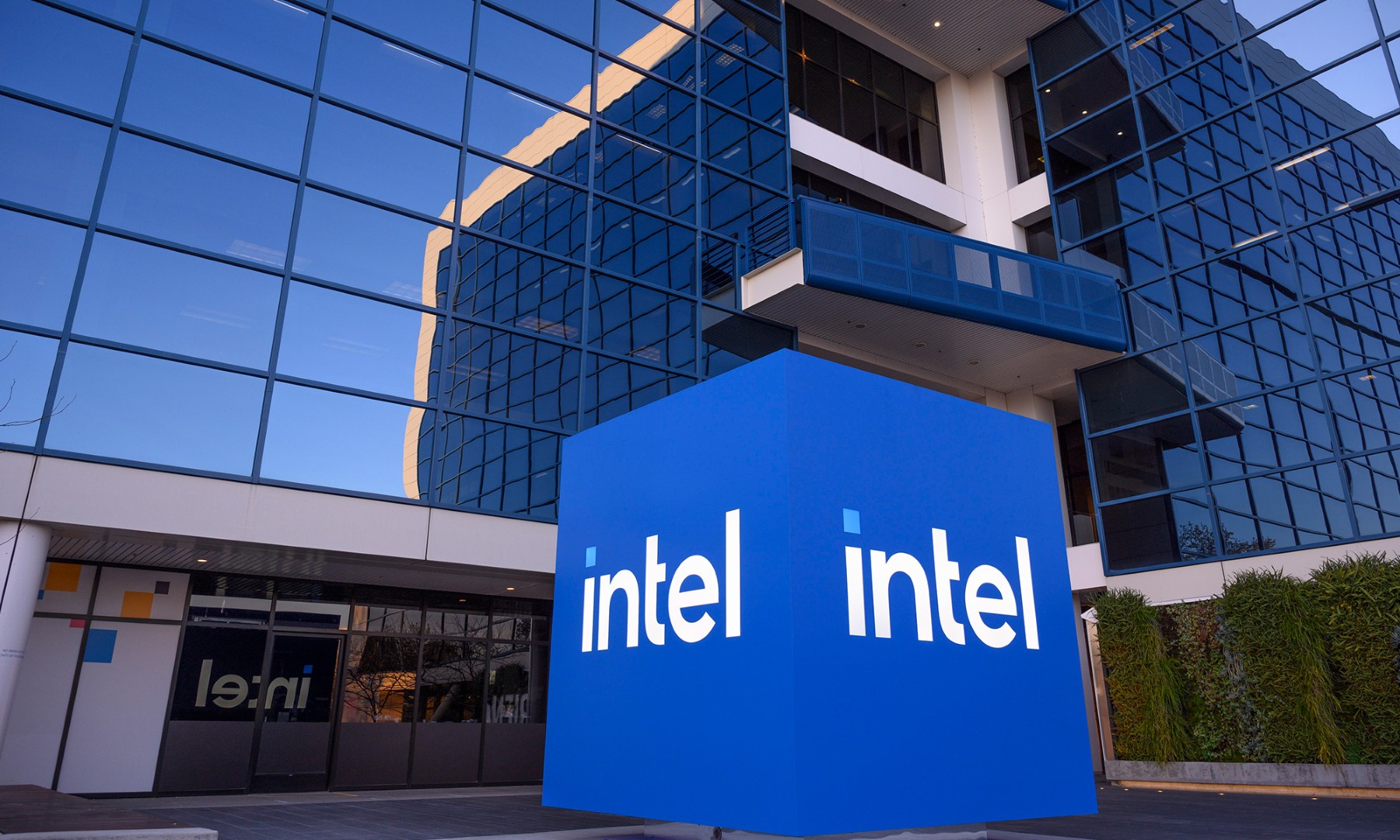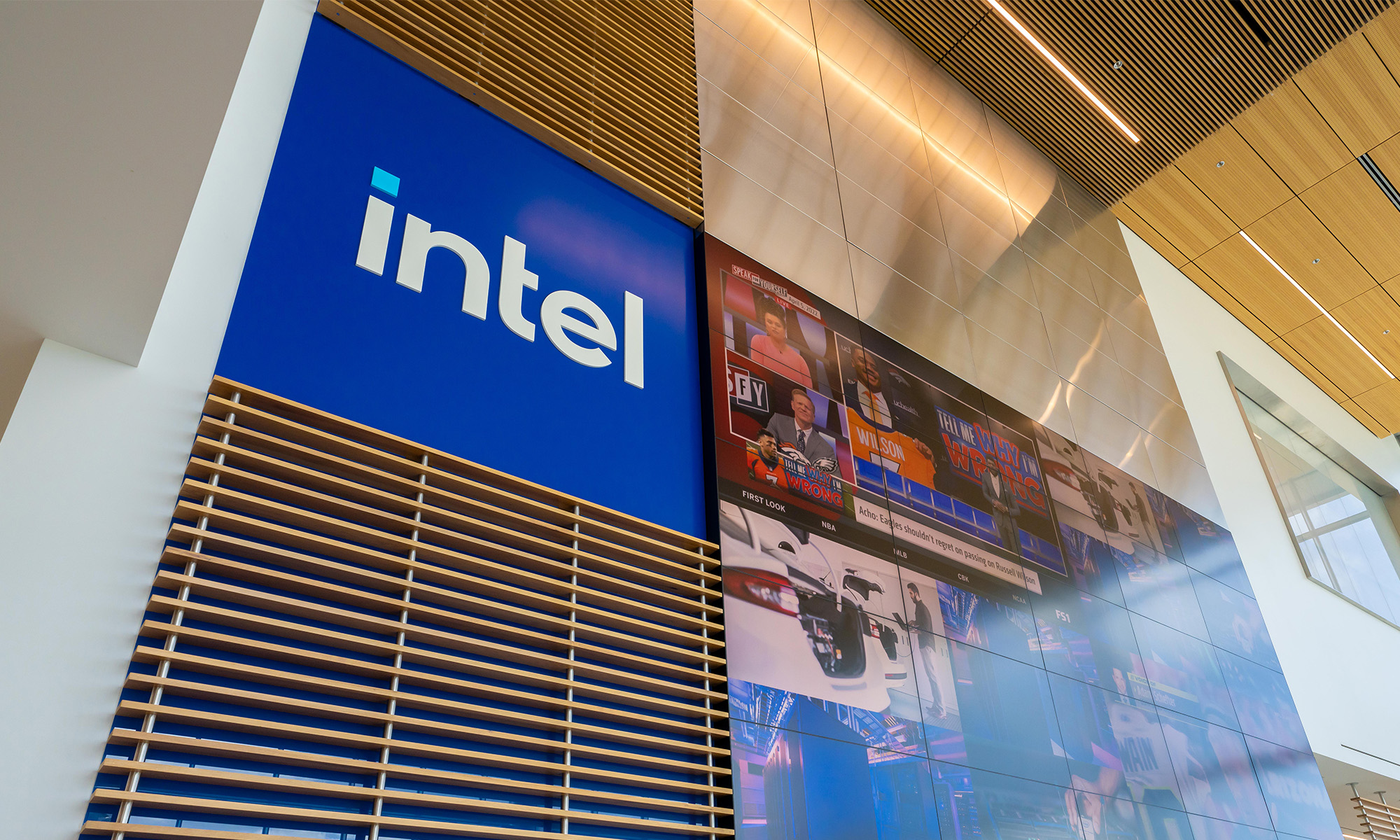Ahead of Intel's (INTC +6.31%) last earnings report in January, investors went hog wild once the word was out that PC sales had fared far better than many had expected. Indeed, Intel's PC client group saw a slight year-over-year increase during the fourth quarter (although competitor Advanced Micro Devices (AMD 2.02%) wasn't as lucky, as Intel's gain was AMD's pain). Spoiling the PC growth party was a significant miss in data center group growth, which muted the full quarter's results.
Last quarter's "miss"
For convenience, the results from Intel's fourth-quarter report are reproduced here:

Intel's results by operating segment. Source: Intel.
If you look at the year-over-year revenue comparison in the data center group, you'll notice that the growth was just 7%. Given that Intel has only two profitable business segments (the PC client and data center groups), with its largest one on the decline (although the PC client group declined less than expected), these results weren't particularly encouraging. Furthermore, this doesn't inspire a lot of confidence in the company's recent commitment to a 15% data center group revenue CAGR through 2016.

Intel data center revenue forecast. Source: Intel.
What to look for this quarter
For the full year 2014, Intel outlined an expectation of 10%-15% revenue growth in the data center (year over year), with a bias toward the low end of that range as a result of the weak fourth-quarter results. More importantly, though, Intel guided to $12.8 billion in revenue this quarter. The company outlined pretty specific year-over-year targets for each of its operating segments at its Investor Day, so let's do the following:
- Construct a table with fourth-quarter 2013 results by segment.
- Include the year-over-year growth estimates by segment.
- From those two numbers, come up with a rough set of benchmarks that Intel needs to meet/exceed at its upcoming first-quarter earnings report on April 15.
|
Division |
Q1 2013 Revenue |
Q1 2013 Operating Profit |
Full year 2014 Revenue Guide |
Full year 2014 Operating Profit guide |
Q1 2014 Revenue benchmark to beat |
Q1 2014 Operating Profit benchmark to beat |
|---|---|---|---|---|---|---|
|
PC Client Group |
$7.99 |
$2.513 |
(5%-7%) |
~flat |
$7.512 |
$2.513 |
|
Data Center Group |
$2.585 |
$1.079 |
10%-15% |
10%-15%+ |
$2.89 |
$1.23 |
|
Other IA |
$0.978 |
($0.611) |
~flat |
"wider than 2013" |
$0.978 |
($0.750) |
|
Software and services |
$0.588 |
($0.024) |
10%-12% |
Positive operating income |
$0.653 |
$0.05 |
|
All Other |
$0.437 |
($0.438) | No guide given |
No guide given |
$0.767 |
($0.533) |
|
TOTAL |
$12.58 |
$2.519 |
~flat |
~flat |
$12.8 |
$2.52 |
Source: Intel, figures in billions
The PC client group is key
The biggest driver here is obviously the PC client group. If Intel can do better than a 6% decline, then this would not only appear as a "beat" this quarter, but could lead to a revision of full-year guidance upward on the top and bottom lines. However, the market will rightly be skeptical of a one-quarter "beat" and would probably attribute it to a temporary spike due to Windows XP end of life. Even a positive second-quarter guide would still draw such skepticism.
That aid, when Advanced Micro Devices reports its numbers, we'll get a pretty good sense of how much share Intel is managing to take. Even at the current 80/20 market-share split, there is additional room for Intel to take share at the low end with its Bay Trail-M processor and subsequent follow-ons. Should such a market share gain story materialize, Intel would be poised to outperform the broader PC market.
The data center story is important, too
Intel has missed growth expectations for its data center group over multiple years, but if it can accelerate the growth rate there the market would be a lot more comfortable in assigning Intel a higher multiple. With AMD largely uncompetitive in X86 servers, and with Intel appearing to have successfully blocked the ARM incursion into its territory within the data center, this is a good business with a wide and deep moat, worthy of a relatively rich multiple in its own right.
Foolish takeaway
While there's much more that could be discussed here, the two big levers to a potential "beat and raise" are the data center and PC client groups. The PC market appears to be stabilizing, and the quality of the machines at almost every price point seems to be improving, so the odds that Intel is able to drive that back to growth are actually not small. Intel largely owns the server market and is expanding into new verticals within the data center, although the mix is still dominated by the stagnant enterprise IT segment that has been weighing on the division's results.







